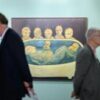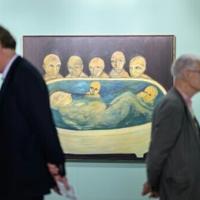Roughly $1.2 billion in art changed hands at the world’s chief auction houses—Sotheby’s, Christie’s and Phillips—during a weeklong series of bellwether auctions in New York that concluded Friday. That’s a little over half of what similar sales totaled last fall, but no matter: Collectors say they are starting to feel the itch to splurge on high-end art for the first time in a couple of years.
In a realm dominated by billionaires who can afford to go on art-buying sprees in good economic years and bad, it’s confounding to some that art sales have been in such a slump lately. The market’s been hampered in part by fears over inflation, multiple wars and election uncertainties. Now, with the U.S. presidential election behind us and several rounds of interest-rate cuts, market watchers are closely tracking the spending habits of the world’s wealthy to gauge whether they feel good times are ahead, or not. As with everything in luxury, perception is key. This week, the consensus among blue-chip art buyers clearly shifted to a cheerier mood.
“People needed to see a good signal that the art market was still alive, and we gave them that,” said Christie’s chief executive Guillaume Cerutti, whose house sold Magritte’s 1954 “Empire of Lights,” for $121.2 million over its $95 million estimate. It also sold Ruscha’s 1964 “Standard Station, Ten-Cent Western Being Torn in Half,” which surpassed its $50 million estimate by $18.3 million. Billionaire hedge-fund manager Ken Griffin won the Magritte, as first reported by the Canvas, an art-market newsletter. The Ruscha buyer remains anonymous.
Sotheby’s priciest piece of the week was a $65.5 million Claude Monet “Water Lilies” from the estate of faux-eyelash executive Sydell Miller, which had been estimated at $60 million. Phillips sold a splattery Jackson Pollock for $15.3 million, over its $13 million estimate. Both buyers are also anonymous.
The upswing took even seasoned market veterans by surprise. Heading into these sales, art adviser Philip Hoffman said he was bracing for a “horrific” bloodbath of unsold works and mopey bidders. Instead, he said he saw “the market in its best form in three years,” as bidders piled into the competition for everything from classic mainstays such as modernist painter Stuart Davis to trendy upstarts such as millennial painter Lucy Bull. Frenzied bidding wars stretched up to 10 minutes in some cases.
Hugo Nathan, another art adviser from London, said collectors who consider art buying to be a respite from their work worries seem ready to push past the doom-and-gloom of recent seasons—so long as they’re not alone in holding up their paddles. “People are herd animals, and once our friends start buying again, everyone else wants in as well,” Nathan said.
Still, it’s too soon to tell if the newfound euphoria represents a blip or the starting point of a market upturn. Collectors invariably exhale whenever auction houses pass such high-profile trophy tests like the $121.2 million Magritte—the only artwork this year to cross that rarefied, nine-figure mark at auction. But it will likely take more than a few eye-catching pieces to lift an entire global market out of the doldrums.
Some think the reason bidding has perked up is tied to the recent cuts in interest rates, which soared after the pandemic and made it more expensive for everyone to borrow money to buy anything.
Others have suggested that the recent U.S. presidential election and a roughly $142 billion Chinese stimulus package could have added some bidding fuel of their own.
Cerutti said there’s probably not one factor that’s lifting an international marketplace filled with hundreds of artists whose outputs are continually being recalibrated based on intangible notions of popularity and posterity. For his part, he said he doesn’t think any recent political and economic factors altered the situation overnight.
That won’t likely stop people from sifting for clues into what’s motivating people to buy. A $4.2 million Roy Lichtenstein “Oval Office (Study)” from the artist’s own estate did sell this week for quadruple its low estimate. Asian bidders also took home several top pieces, including a pair of Joan Mitchell abstracts and Sotheby’s big Monet.
“Comedian,” by Italian artist Maurizio Cattelan—better known as the Banana—proved to be the viral star of the week and a marketing bonanza for Sotheby’s. The artwork consists of a banana duct-taped to the wall, with instructions for replacing it when it rots. The house’s evening sale pulled in an influx of 30-somethings dressed in hoodies and sneakers, who stood out among the perennial sea of pinstripe suits in the saleroom. A few newcomers wore banana-themed T-shirts to the sale and used their cellphone cameras to film their bidding. Playful moves like these have been largely missing from recent, sleepy seasons.
With Bitcoin’s price soaring above $90,000, cryptocurrency investors also came to flex their wallets as well. Investors who started buying digital art during the NFT craze a few years ago showed up eager to win traditional pieces. After auctioneer Oliver Barker opened the bidding for the Banana at $800,000, seven bidders pounced, chasing it far higher. Tron blockchain founder Justin Sun won the fruit for $6.2 million, which he said he would be paying in crypto.
Sun, in an interview, said he collects pieces by Pablo Picasso, Andy Warhol and Alberto Giacometti, but until last month he had never encountered conceptual art—where the idea behind the work matters more than what it looks like. That’s when he saw a Sotheby’s video online about its plans to resell the Banana. Sun had missed the stir the Cattelan caused during its art-fair debut five years ago; he didn’t even go to see it in person during the run-up to the auction, but still felt compelled to win it, finding connections between the piece and blockchain technology.
“As long as you own the banana, you’re part of an artwork that’s evolving,” Sun said. He eventually plans to eat the artwork.
Other buyers seemed to embrace a sanguine attitude toward the art-buying process. At Sotheby’s contemporary sale, Garrette Furo, a 32-year-old digital-asset investor from New York, bought the first lot without realizing exactly what he’d won. He thought he was competing for an estimated $60,000 Yu Nishimura painting of a figure standing in woods, 2018’s “Parting of the Way.”
What he didn’t know until afterward was that Sotheby’s had swapped the work for a different Nishimura, “Pause.” When Furo realized he’d won the wrong work for $132,000, he just laughed it off. (Sotheby’s put the new piece online and announced the swap right before the sale.)
“I thought it was funny,” Furo said, “like it was meant to be.”
Markets tend to cycle differently each time, so advisers say they don’t want clients getting ahead of themselves. Nathan said he has cautioned his clients against mopping up bargains, “or else they’ll have a collection that looks like one,” he said.
Overall, prices for the world’s top artists have also fallen by as much as half over the past couple of years. Sellers plying works into these sales knew coming in that they couldn’t ask steep prices for anything, which served to draw seasoned bidders back in as well.
Jeff Koons, who became the most expensive living artist after his metallic “Rabbit” sold for $91 million five years ago, looked cheap this week. On Thursday, Christie’s sold a quartet of his encased vacuum cleaners from his 1980s breakout series “The New” for $5.1 million. Similar versions have sold over the past decade for nearly $8 million, according to the Artnet auction database. Sotheby’s asked at least $10 million for a Koons sculpture of a nude “Woman in Tub,” but failed to sell it at all.
Among the still-considerable number of unsold works this week was a 1962 Warhol silk-screen of red shipping labels. Estimated to sell at Christie’s for at least $1.5 million, its title sums up the market’s cautiously optimistic mood: “Fragile–Handle with Care.”
Write to Kelly Crow at kelly.crow@wsj.com
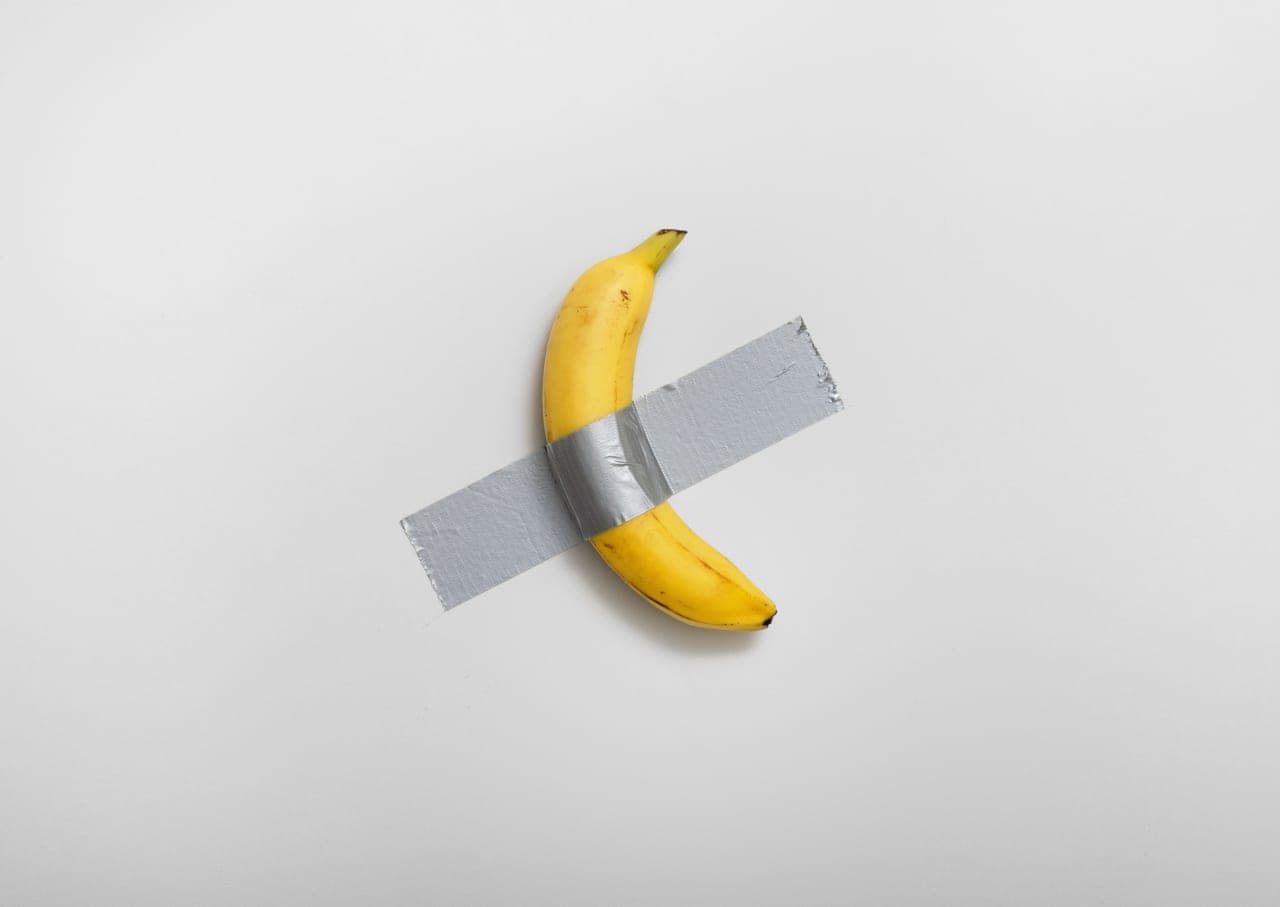
View Full Image
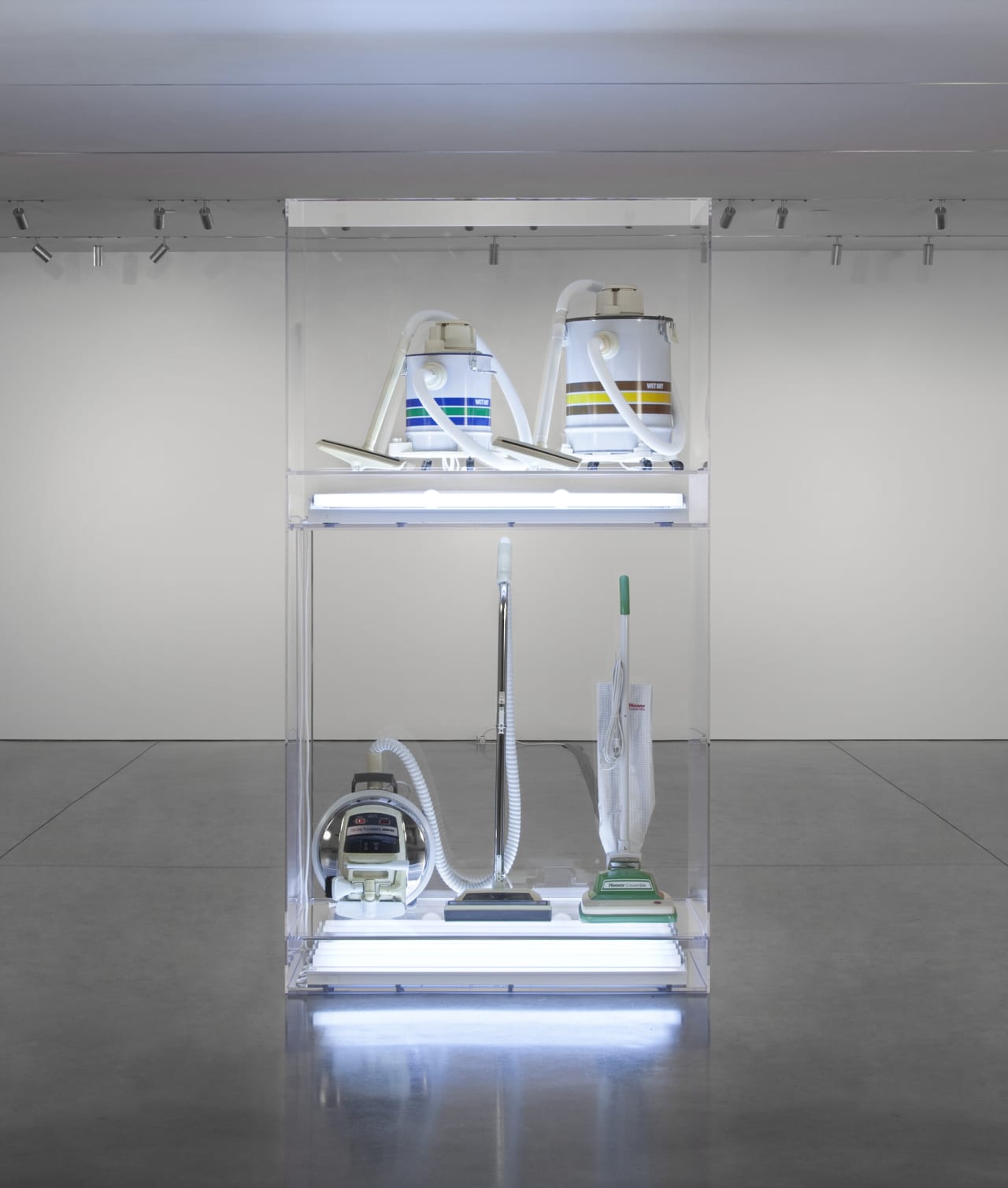
View Full Image
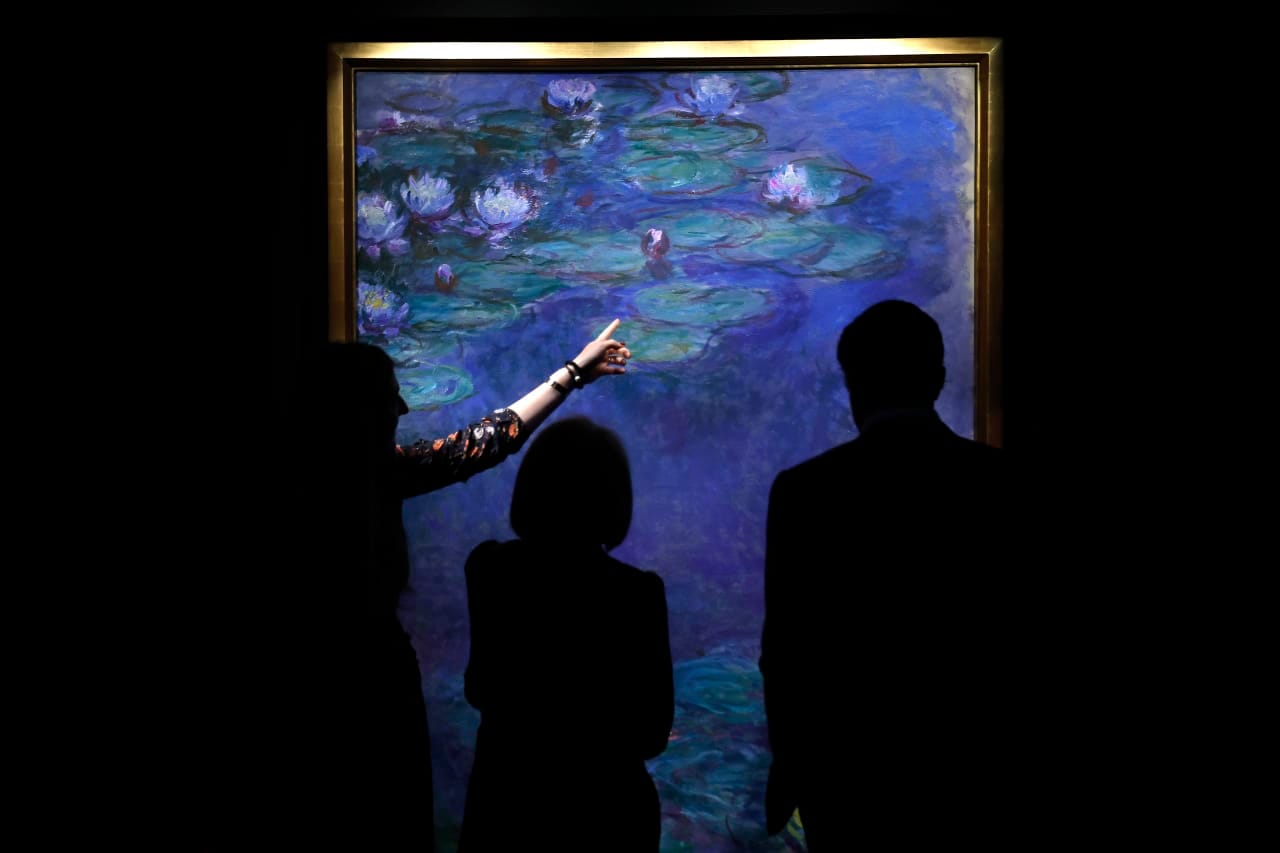
View Full Image
This post was originally published on this site be sure to check out more of their content

